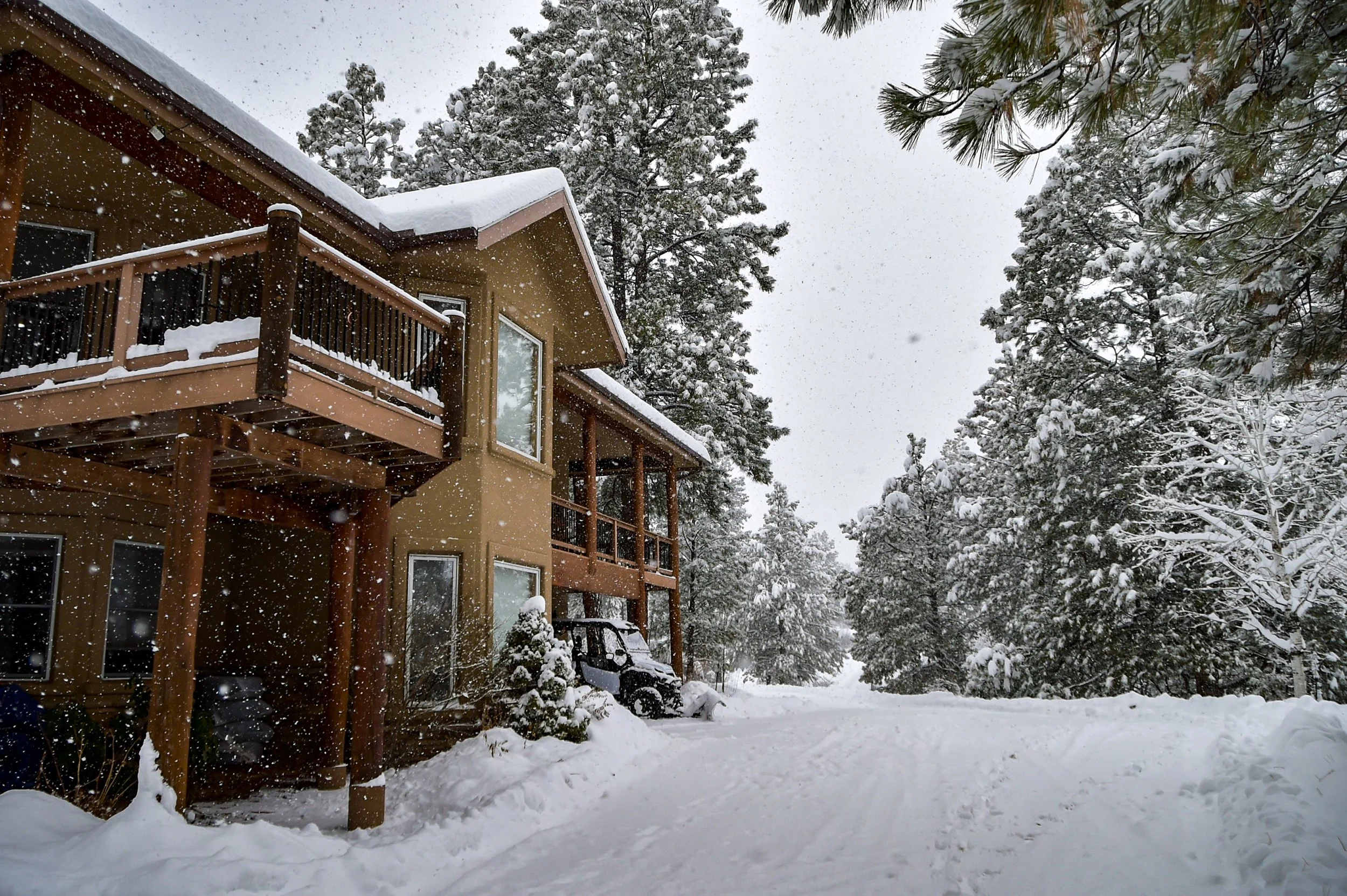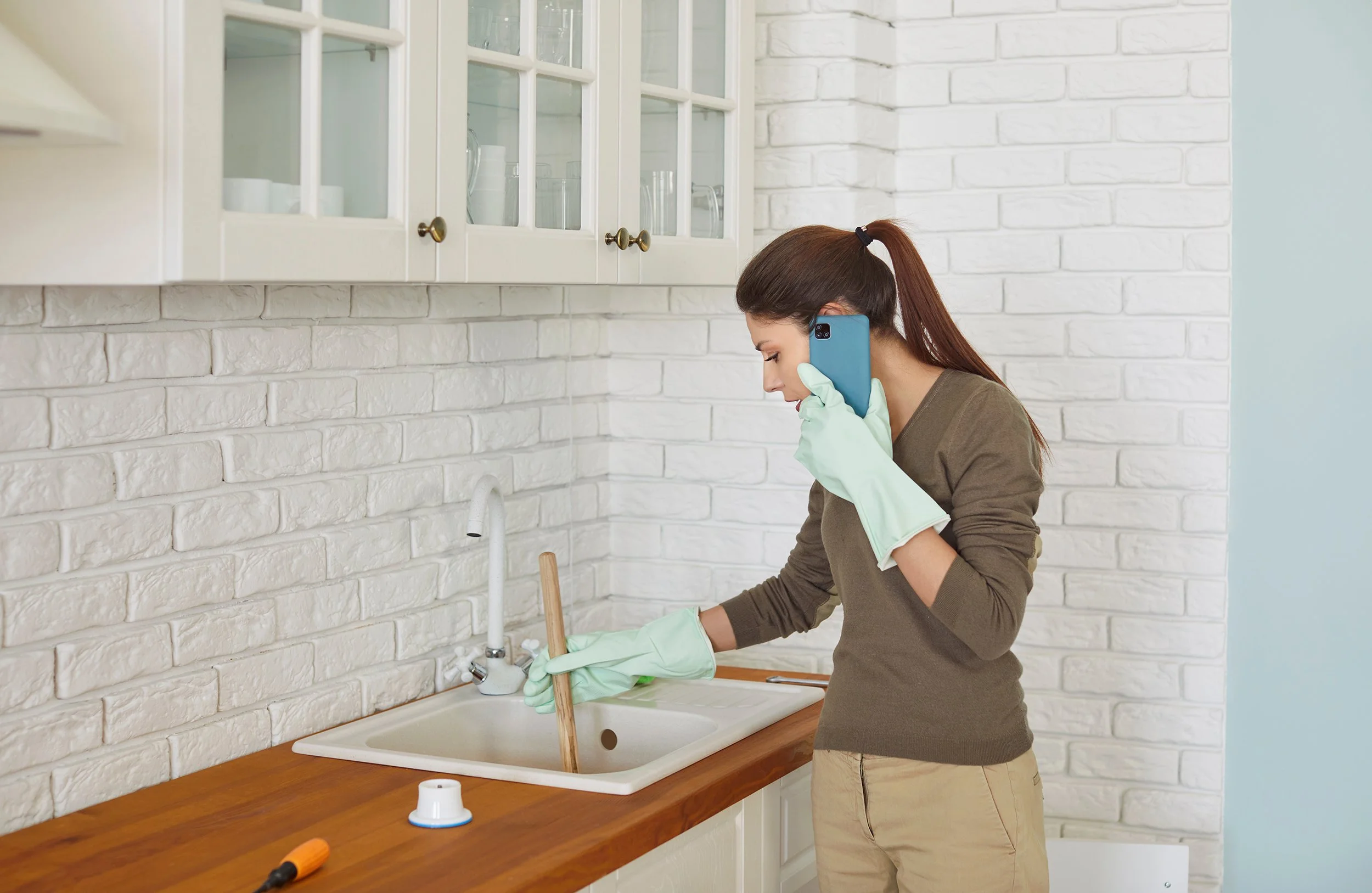Preventing Frozen Pipes in Colorado: Early Warning Signs and Emergency Steps

Picture this: It's 6 AM on a February morning in Denver, the thermometer reads -15°F, and you stumble to the kitchen for your essential morning coffee—only to discover that your faucet has gone on strike. No gentle trickle. No promising gurgle. Just the sound of your dreams of hot coffee dying a slow, frozen death.
Welcome to Colorado winter plumbing, where Mother Nature seems to have a personal vendetta against your pipes. While our state offers world-class skiing, stunning mountain vistas, and 300 days of sunshine, it also delivers the kind of bone-chilling temperatures that can turn your plumbing system into an expensive ice sculpture overnight.
Frozen and burst pipes aren't just inconvenient—they're wallet-emptying disasters that can cause thousands of dollars in damage faster than you can say "polar vortex." But here's the good news: with the right knowledge and a little Colorado-style preparedness, you can keep your pipes flowing and your coffee brewing all winter long.
Understanding Colorado's Pipe-Freezing Conditions
Colorado's continental climate creates perfect conditions for pipe freezing. The state experiences dramatic temperature swings, with mountain communities regularly seeing temperatures drop to -20°F or lower, while even Denver metro areas can experience extended periods below 10°F. The dry air and intense solar radiation during the day, followed by rapid cooling at night, create thermal stress on plumbing systems that many other regions don't experience.
At Colorado's elevation, water freezes more readily due to lower atmospheric pressure, and the freeze-thaw cycles are more frequent and severe than at sea level. These conditions make pipe protection not just advisable but essential for every Colorado homeowner.
When water freezes inside pipes, it expands by approximately 9%, creating tremendous pressure—up to 2,000 pounds per square inch—that can burst even the strongest copper or PVC pipes. The most vulnerable pipes are those in unheated spaces like basements, crawl spaces, attics, and exterior walls, particularly on the north side of homes where sunlight provides little warming effect.
High-Risk Areas in Colorado Homes
Colorado's architectural styles and building practices create specific vulnerabilities. Many homes built before 1980 have inadequate insulation in crawl spaces and basements, while newer construction sometimes places pipes in exterior walls to maximize interior space. Ranch-style homes, popular throughout the Front Range, often have extensive plumbing runs through unheated basements and crawl spaces.
Mountain homes face additional challenges, including seasonal vacancy that leaves homes unheated for extended periods, extreme temperature variations, and limited access for emergency repairs. Vacation properties in ski country are particularly vulnerable, as owners may not discover frozen pipes until significant damage has occurred.
Mobile homes and manufactured housing, common in rural Colorado areas, present extreme vulnerability due to minimal insulation and exposed plumbing underneath the structure. These homes require special attention and protection measures during winter months.
Early Warning Signs: What Colorado Homeowners Should Watch For
Recognizing the early warning signs of pipe freezing can prevent minor problems from becoming major disasters. The most obvious early indicator is reduced water flow from faucets, particularly during morning hours when overnight temperatures have been lowest. This reduction might start as a slight decrease in pressure and progressively worsen as ice formations grow within the pipe.
Strange sounds from your plumbing system can signal developing ice blockages. Listen for gurgling, banging, or unusual creaking sounds, especially when turning faucets on or off. These sounds often indicate that water is trying to flow around ice formations or that pipes are contracting and expanding due to temperature changes.
Frost or ice visible on exposed pipes, particularly in basements, crawl spaces, or near exterior walls, is an immediate warning sign. Even a thin layer of frost suggests that pipe temperatures are approaching the freezing point and intervention is needed immediately.
Temperature monitoring is crucial in Colorado homes. If indoor temperatures in areas housing plumbing drop below 55°F, pipes are at risk. Use a reliable thermometer to monitor basement, crawl space, and attic temperatures, particularly during extreme cold snaps.
Unusual water behavior, such as water backing up in drains or toilets gurgling when not in use, can indicate ice blockages in the system. Pay attention to any changes in your home's normal water behavior patterns.
Prevention Strategies for Colorado's Climate
Effective pipe protection in Colorado requires a multi-layered approach that addresses both indoor and outdoor plumbing systems. The foundation of pipe protection is proper insulation. Pipe insulation sleeves, available at any Colorado hardware store, should be installed on all exposed pipes in unheated areas. Foam pipe insulation is inexpensive and highly effective, but ensure complete coverage with no gaps where cold air can penetrate.
Heating strategies are critical during Colorado's extended cold periods. Maintain consistent indoor temperatures of at least 55°F throughout your home, including basements and crawl spaces. During extreme cold warnings, consider raising your thermostat a few degrees and opening cabinet doors under sinks to allow warm air circulation around pipes.
Faucet dripping is a time-tested Colorado tradition during cold snaps. Allow faucets to drip slowly when temperatures drop below 20°F, as moving water is much more difficult to freeze than standing water. Focus on faucets supplied by pipes running through exterior walls or unheated spaces.
Seal air leaks that allow cold air to reach pipes. Use caulk or expandable foam to seal gaps around pipes where they enter exterior walls, and install weatherstripping around basement windows and doors. Even small air leaks can create localized freezing conditions around pipes.
For outdoor plumbing, disconnect and drain all garden hoses before the first freeze, typically in late October or early November in most Colorado areas. Turn off water supply valves to outdoor spigots and drain the lines completely. Many Colorado homes have frost-free outdoor spigots, but these still require hose disconnection to function properly.
Water meter protection is often overlooked but crucial in Colorado. Many water meters are located in below-ground pits that can still freeze during extended cold periods. Keep meter pit covers secure and consider adding insulation around the meter if your water company permits it.
Emergency Response: When Pipes Freeze
Despite best prevention efforts, pipes may still freeze during Colorado's most severe weather events. Quick and proper response can prevent frozen pipes from becoming burst pipes and minimize damage.
If you suspect frozen pipes, immediately turn on faucets to check water flow. If no water comes out or flow is significantly reduced, you likely have frozen pipes. Leave the faucet open—when the pipe thaws, water will flow and help melt remaining ice.
Locate the frozen section by feeling along exposed pipes for extremely cold sections or visible frost. Common freeze locations include pipes in exterior walls, unheated crawl spaces, and areas near drafts or air leaks.
Apply heat to the frozen section using safe methods only. Hair dryers work well for accessible pipes—keep the dryer moving to prevent overheating any one spot. Portable space heaters can warm entire areas but must be used safely and never left unattended. Heating pads designed for pipes are available at Colorado hardware stores and provide consistent, safe heat.
Avoid dangerous thawing methods including open flames, propane torches, or other high-heat sources that can damage pipes, start fires, or create toxic fumes. Never use electrical appliances in wet conditions.
If you cannot locate the frozen area or if multiple fixtures are affected, the freeze may be in your main water line. This typically requires professional intervention. In this case, turn off your main water supply and contact a licensed Colorado plumber immediately.
When to Call Professional Help
Certain frozen pipe situations require immediate professional intervention. If your main water line is frozen, attempting DIY repairs can cause more damage and delay restoration of water service. Professional plumbers have specialized equipment including pipe steamers and thawing machines that can safely thaw main lines.
If you discover any cracks, splits, or leaks in pipes, shut off water immediately and call a professional. Even small cracks can become major breaks when ice melts and water pressure resumes.
Multiple frozen locations throughout your home suggest systemic problems that may require professional assessment of your heating system, insulation, or pipe routing.
For burst pipes, emergency response is critical. Shut off your main water supply immediately, turn off electricity to affected areas if there's any water near electrical outlets or appliances, and contact both a plumber and your insurance company promptly.
Recovery and Damage Assessment
After successfully thawing frozen pipes, recovery involves several important steps. Gradually restore full water pressure and check all fixtures for proper operation. Look carefully for any signs of leaks, including water stains, dripping sounds, or damp areas around previously frozen pipes.
Document any damage with photographs for insurance purposes, including affected areas, damaged belongings, and the condition of pipes and fixtures. Keep receipts for emergency repairs and temporary accommodations if your home becomes uninhabitable.
Consider this experience a learning opportunity to improve your home's pipe protection. Evaluate what caused the freezing and implement additional prevention measures before the next cold snap.
Long-Term Protection Strategies
Colorado homeowners should consider long-term improvements to reduce future freezing risk. Upgrading insulation in crawl spaces, basements, and attics provides year-round benefits beyond pipe protection. Adding heat sources like baseboard heaters or heat tape in vulnerable areas can prevent freezing during extreme weather.
Rerouting pipes away from exterior walls during major renovations eliminates many freeze risks. While this represents a significant investment, it may be worthwhile for homes with repeated freezing problems.
Smart home technology can provide early warning systems, including temperature sensors in vulnerable areas that alert homeowners to dangerous conditions via smartphone apps.
Professional Home Concierge Services
For many Colorado homeowners, the complexity of year-round pipe protection—combined with our state's demanding climate—makes a professional home concierge service an invaluable long-term investment. Services like Willow's subscription home maintenance plans take the guesswork out of seasonal preparation by providing proactive, expert care tailored specifically to Colorado's unique challenges.
A home concierge service ensures that critical winterization tasks never get overlooked, even during busy periods or unexpected early cold snaps. Your dedicated home advisor understands Colorado's weather patterns and can coordinate pipe insulation upgrades, heating system maintenance, and emergency repairs with trusted local professionals who specialize in Front Range conditions.
The subscription model provides peace of mind through consistent seasonal preparations, emergency response coordination, and ongoing relationships with vetted contractors who understand your home's specific vulnerabilities. Rather than scrambling to find reliable help during a pipe emergency, you have an established support system ready to respond immediately.
For homeowners who travel frequently, own vacation properties, or simply want expert oversight of their home's seasonal needs, a concierge service transforms pipe protection from a source of winter anxiety into a seamlessly managed aspect of homeownership. The investment often pays for itself by preventing just one major freeze-related incident while providing year-round home care that extends far beyond pipe protection.
Seasonal Preparation Checklist
Create an annual winter preparation routine that includes inspecting and replacing pipe insulation, testing heating systems in areas with plumbing, sealing new air leaks, and reviewing your emergency response plan with all family members.
Stock emergency supplies including space heaters, hair dryers, pipe insulation materials, and contact information for reliable local plumbers. During severe weather warnings, implement prevention measures proactively rather than waiting for problems to develop.
Conclusion
Frozen pipes represent one of the most preventable yet potentially devastating winter problems for Colorado homeowners. The state's extreme climate conditions require proactive, consistent attention to pipe protection, but the investment in prevention measures pays dividends in avoided emergency repairs and water damage.
By understanding Colorado's specific risk factors, recognizing early warning signs, and implementing comprehensive prevention strategies, homeowners can protect their properties and maintain comfort throughout even the harshest Colorado winters. Remember that pipe protection is not a one-time effort but an ongoing responsibility that requires seasonal attention and continuous vigilance.
When emergencies do occur, quick and appropriate response can minimize damage and restore normal water service more rapidly. Don't hesitate to seek professional help when situations exceed your capabilities—the cost of expert intervention is almost always less than the cost of water damage from delayed or improper repairs.
Stay warm, stay prepared, and keep those pipes flowing throughout Colorado's challenging but beautiful winter season.
Home Concierge for Luxury Home Property Management
At Willow, we take a proactive approach to home care, ensuring your luxury home remains in pristine condition year-round. From routine maintenance and seasonal upkeep to coordinating trusted vendors for repairs and upgrades, we handle it all with a high-touch, concierge-style experience tailored to your needs.
Let us take home management off your plate. Contact Willow today to learn how our services can help you protect, maintain, and enhance your home with ease.
Willow is a luxury home concierge service based in Boulder, Colorado. We care about your home and giving you back your time to do the things you care about most.
How it Works






